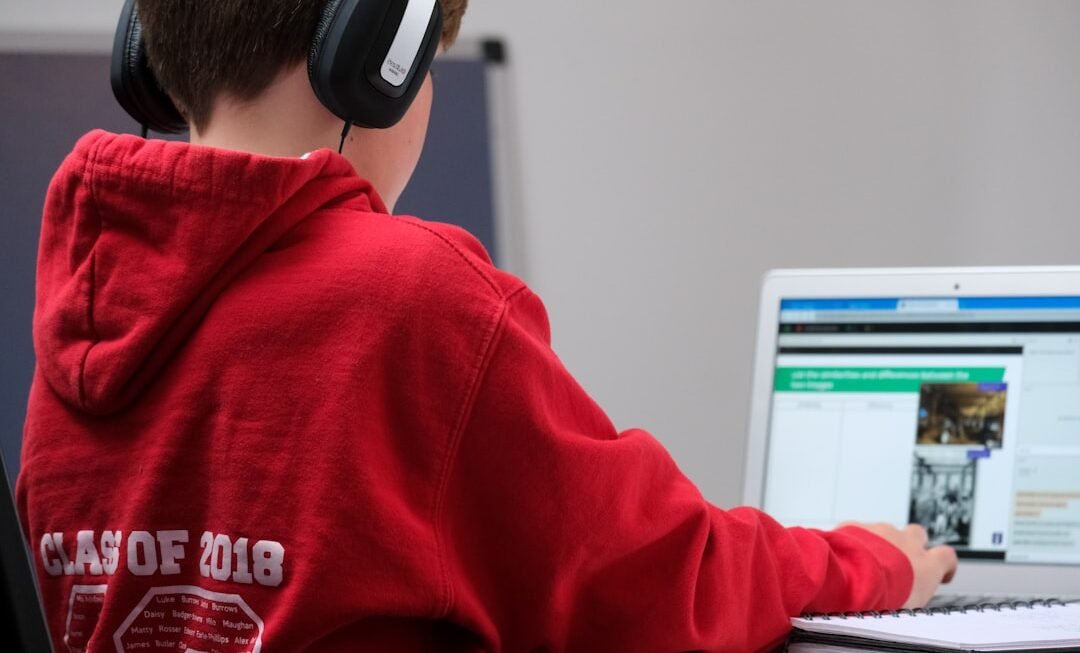The advent of artificial intelligence (AI) has ushered in a transformative era for education, particularly through the proliferation of AI-generated content. This technology has the potential to reshape how educational materials are created, distributed, and consumed. AI algorithms can analyze vast amounts of data, including textbooks, academic papers, and online resources, to generate tailored content that meets specific educational standards and learning objectives.
For instance, platforms like OpenAI’s ChatGPT can produce essays, quizzes, and even interactive learning modules that cater to various subjects and grade levels. This capability not only streamlines the content creation process but also ensures that the material is up-to-date and relevant. Moreover, the rise of AI-generated content is not merely a trend; it reflects a broader shift towards data-driven decision-making in education.
Educators are increasingly leveraging AI tools to enhance their teaching methodologies and improve student outcomes. By utilizing AI-generated resources, teachers can provide students with diverse perspectives and a wealth of information that might not be available through traditional textbooks. This democratization of knowledge allows for a more inclusive educational environment where students can engage with content that resonates with their individual interests and learning styles.
Key Takeaways
- AI-generated content is on the rise in education, revolutionizing the creation of educational materials.
- Personalized learning paths are tailoring education to individual needs, enhancing student success and engagement.
- Remote learning has had a significant impact on student engagement, prompting the need for adaptive and personalized learning approaches.
- Implementing AI-generated content in education comes with challenges that need to be overcome for successful integration.
- The future of education lies in AI-generated content and personalized learning paths, offering benefits for both students and educators.
Personalized Learning Paths: Tailoring Education to Individual Needs
Personalized learning paths represent a significant advancement in educational practices, allowing for a more customized approach to student learning. This method acknowledges that each student has unique strengths, weaknesses, and interests, which can significantly influence their educational journey. By utilizing data analytics and AI technologies, educators can create individualized learning experiences that adapt to the pace and style of each learner.
For example, platforms like DreamBox Learning and Khan Academy employ algorithms that assess a student’s performance in real-time, adjusting the difficulty of tasks and suggesting resources that align with their specific needs. The implementation of personalized learning paths not only enhances student engagement but also fosters a sense of ownership over their education. When students are given the autonomy to choose their learning trajectories, they are more likely to invest time and effort into their studies.
This approach encourages self-directed learning, where students take initiative in seeking out knowledge and skills that are relevant to their personal goals. As a result, personalized learning paths can lead to improved academic performance and greater satisfaction with the educational experience.
The Impact of Remote Learning on Student Engagement
The shift to remote learning, accelerated by the COVID-19 pandemic, has had profound implications for student engagement. While online education offers flexibility and accessibility, it also presents challenges in maintaining student interest and motivation. Traditional classroom dynamics—such as face-to-face interactions and hands-on activities—are often difficult to replicate in a virtual environment.
Consequently, educators have had to innovate new strategies to keep students engaged while learning from home. One effective approach has been the integration of interactive technologies that facilitate collaboration among students. Tools like Zoom breakout rooms and collaborative platforms such as Google Classroom allow learners to work together on projects, fostering a sense of community despite physical distance.
Additionally, gamification elements—such as leaderboards, badges, and rewards—have been employed to make learning more engaging. These strategies not only help maintain student interest but also encourage active participation in the learning process.
How AI is Revolutionizing the Creation of Educational Materials
AI is fundamentally changing how educational materials are developed, making the process more efficient and responsive to current educational needs. Traditional methods of content creation often involve extensive research, writing, editing, and formatting—tasks that can be time-consuming for educators already burdened with numerous responsibilities. AI-generated content alleviates some of this pressure by automating parts of the writing process.
For instance, AI tools can generate quizzes based on specific topics or create summaries of complex texts, allowing educators to focus on higher-order tasks such as curriculum design and student interaction. Furthermore, AI’s ability to analyze data enables the creation of highly targeted educational materials. By examining trends in student performance and engagement, AI can suggest content that addresses common misconceptions or areas where students struggle.
This data-driven approach ensures that educational resources are not only relevant but also effective in promoting understanding and retention. As a result, educators can provide students with materials that are tailored to their needs, ultimately enhancing the overall learning experience.
The Role of Personalized Learning Paths in Student Success
Personalized learning paths play a crucial role in fostering student success by aligning educational experiences with individual learner profiles. Research has shown that when students engage with material that resonates with their interests and abilities, they are more likely to achieve academic success. Personalized learning paths allow educators to identify specific goals for each student and develop strategies to help them reach those objectives.
For example, a student struggling with mathematics may benefit from targeted practice exercises that focus on foundational skills before progressing to more advanced concepts. Moreover, personalized learning paths encourage continuous assessment and feedback, which are essential components of effective learning. By regularly monitoring student progress through formative assessments and adaptive learning technologies, educators can make informed decisions about instructional strategies and interventions.
This ongoing feedback loop not only helps students stay on track but also empowers them to take ownership of their learning journey. As they see tangible progress toward their goals, students are more likely to remain motivated and engaged in their studies.
Overcoming Challenges in Implementing AI-Generated Content in Education
Despite the numerous advantages of AI-generated content in education, several challenges must be addressed for successful implementation. One significant concern is the quality and accuracy of the content produced by AI algorithms. While these systems can generate vast amounts of information quickly, they may also produce errors or biased perspectives if not properly monitored.
Educators must remain vigilant in reviewing AI-generated materials to ensure they meet academic standards and provide accurate information. Another challenge lies in the integration of AI technologies into existing educational frameworks. Many educators may lack the technical expertise or resources necessary to effectively utilize AI tools in their classrooms.
Professional development programs focused on technology integration can help bridge this gap by equipping teachers with the skills needed to leverage AI-generated content effectively. Additionally, schools must invest in infrastructure—such as reliable internet access and appropriate hardware—to support the use of these technologies in both remote and in-person learning environments.
Adapting to Different Learning Styles through Personalized Learning Paths
One of the most compelling aspects of personalized learning paths is their ability to accommodate diverse learning styles among students. Recognizing that learners absorb information differently—whether through visual aids, auditory instruction, or hands-on activities—educators can tailor their approaches to meet these varied needs. For instance, a student who excels in visual learning may benefit from infographics or video tutorials, while an auditory learner might thrive with podcasts or discussions.
AI technologies can facilitate this adaptation by analyzing student interactions with different types of content and identifying patterns in their preferences. By leveraging this data, educators can curate resources that align with each student’s preferred learning style, thereby enhancing comprehension and retention. This individualized approach not only supports academic achievement but also fosters a more inclusive classroom environment where all students feel valued and understood.
The Future of Education: AI-Generated Content and Personalized Learning Paths
As we look toward the future of education, it is clear that AI-generated content and personalized learning paths will play an increasingly central role in shaping teaching and learning experiences. The ongoing development of AI technologies promises even greater advancements in content creation, assessment methods, and instructional strategies. For example, future iterations of AI tools may incorporate natural language processing capabilities that allow for more nuanced interactions between students and educational materials.
Moreover, as personalized learning becomes more prevalent, we may see a shift away from traditional grading systems toward more holistic assessments that consider individual growth and mastery over time. This evolution could lead to a more equitable education system where all students have access to resources tailored to their unique needs and aspirations. The integration of AI-generated content into personalized learning frameworks has the potential to create a dynamic educational landscape that prioritizes student agency and fosters lifelong learning.
Enhancing Student Motivation and Engagement through AI-Generated Content
AI-generated content has the potential to significantly enhance student motivation and engagement by providing relevant and stimulating materials tailored to individual interests. When students encounter content that resonates with them personally—whether through relatable examples or interactive formats—they are more likely to engage deeply with the subject matter. For instance, an AI tool could generate reading materials based on a student’s favorite book genre or create math problems related to real-world scenarios they find intriguing.
Additionally, the use of gamification elements within AI-generated content can further boost motivation by introducing elements of competition and achievement into the learning process. Features such as progress tracking, rewards for completing tasks, or challenges against peers can create an engaging atmosphere where students feel encouraged to push their boundaries. By harnessing these motivational strategies through AI-generated content, educators can cultivate a more vibrant learning environment that inspires curiosity and enthusiasm for knowledge.
The Benefits of Personalized Learning Paths for Students and Educators
The implementation of personalized learning paths offers numerous benefits for both students and educators alike. For students, these tailored experiences lead to increased engagement, improved academic performance, and greater satisfaction with their educational journey. When learners have the opportunity to pursue topics that interest them at their own pace, they are more likely to develop a love for learning that extends beyond the classroom.
For educators, personalized learning paths provide valuable insights into student progress and areas for improvement. By utilizing data analytics tools that track individual performance metrics, teachers can make informed decisions about instructional strategies and interventions tailored to each student’s needs. This targeted approach not only enhances teaching effectiveness but also fosters stronger relationships between educators and students as they work collaboratively toward shared goals.
Ethical Considerations in the Use of AI-Generated Content in Education
As the use of AI-generated content becomes more prevalent in education, ethical considerations must be at the forefront of discussions surrounding its implementation. One major concern is the potential for bias within AI algorithms that could inadvertently perpetuate stereotypes or misinformation in educational materials. It is crucial for educators and developers alike to prioritize transparency in how these algorithms are designed and trained.
Additionally, issues related to data privacy must be addressed when utilizing AI technologies in educational settings. The collection of student data for personalized learning purposes raises questions about consent and security measures in place to protect sensitive information. Educators must navigate these ethical dilemmas carefully while ensuring that the benefits of AI-generated content do not come at the expense of student rights or well-being.
In conclusion, while AI-generated content holds immense promise for transforming education through personalized learning paths and enhanced engagement strategies, it is essential to approach its implementation thoughtfully and ethically.












